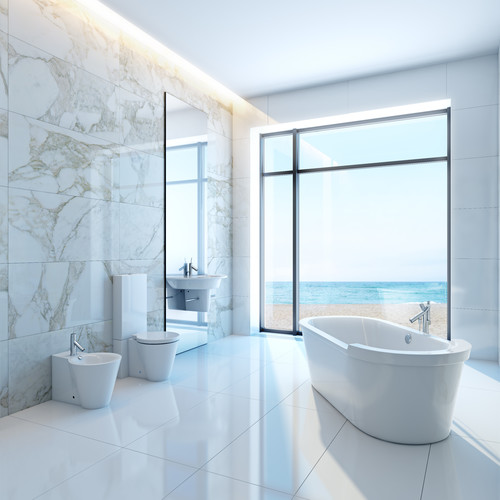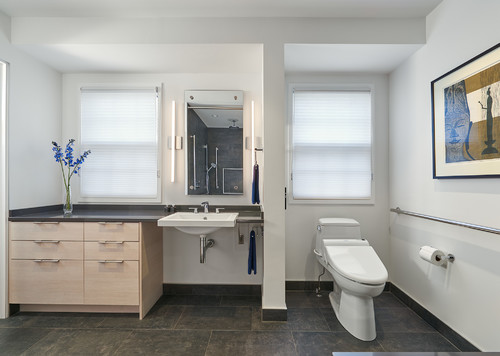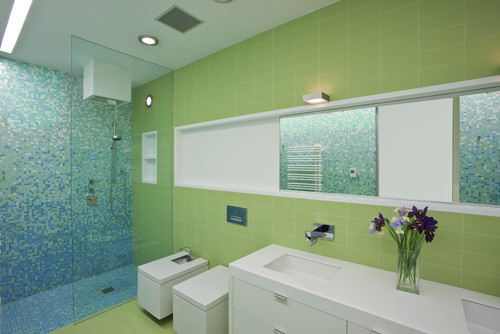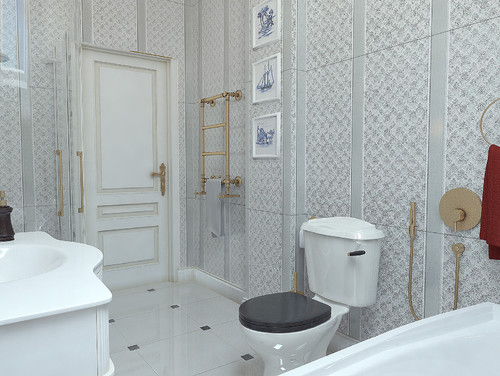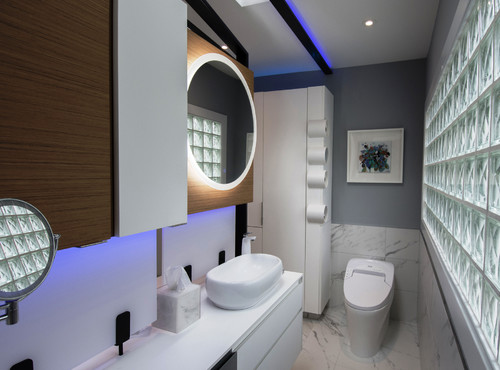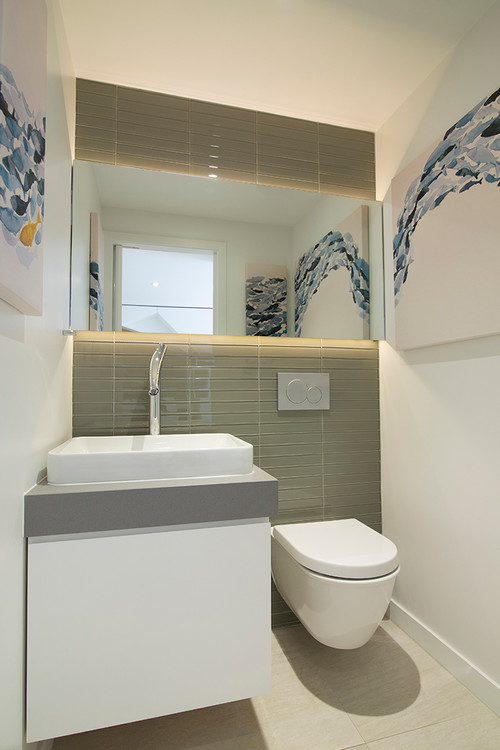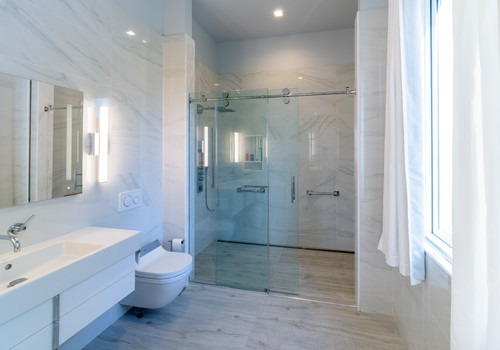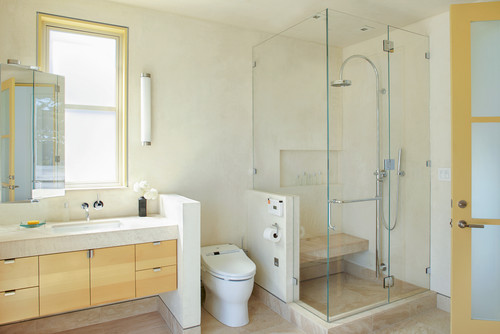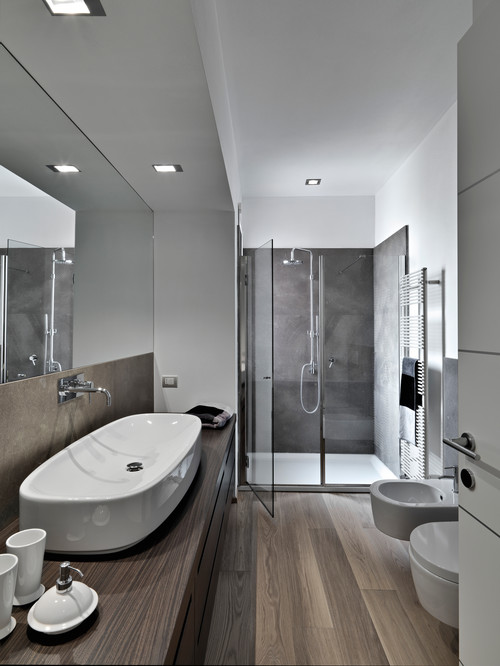The bidet is still a mystery to many and a marvel to even more. But what people want to know is whether the investment is worth it. There’s no short answer here. There’s a lot to consider, starting with understanding what a bidet is and what it does, the different types, benefits, and so much more.
In light of the recent pandemic and all the not-really-joking jokes about toilet paper outages, many people are looking for better ways to protect themselves, including upgrading their home hygiene to reduce their needs. A bidet may be the ideal solution, but it’s not always the right solution for everyone. Keep reading to learn all about bidets and what they offer, as well as whether you might benefit from installing one.
Related: 8 Top Bathroom Remodeling Trends of 2020-2021
What is a Bidet?
The bidet has been popular in Asia, Europe, and South America for centuries. They are becoming much more common in the U.S., as well. This is essentially a water rinse tool designed to spray your private area after you use the toilet to provide a fresher, cleaner feeling.
Different types of bidets are available, including freestanding and attached bidets, handheld models, and more. Typically, people will choose either a freestanding model or an attachment to a toilet they already own. Those doing a full bathroom upgrade or needing a new toilet may purchase a newer model with a pre-installed bidet.
No matter the type, the function of the bidet remains the same: to provide a cleaner solution than plain old toilet paper.
How Do You Use a Bidet?
The great thing about bidets is that they’re typically automatic or have a button similar to a toilet flush button. Once you’re done using the bathroom, you simply push the button or activate the signal, and clean water will be sprayed from the device. This will help reduce the need for toilet paper and leave you feeling cleaner and fresher, which many people enjoy.
The exact operation of each device will vary depending on the type of bidet and the exact model, but the premise is the same. You will activate the bidet, allow it to clean your private areas, and continue your bathroom routine.
What Types of Bidets Are There?
Like anything, there is more than one type of bidet. Fortunately, they all work similarly. First, there are two main general categories to cover: freestanding and attachment bidets. Then, we’ll talk about the newer built-in models.
Related: Freestanding or Built-in Bathtub: Which One Should You Choose?
Freestanding
With a freestanding bidet, you must stand up from the toilet and then move to the basin to use the water feature. Some will have jets, while others will simply have water that rises to the surface. These are usually placed right next to the toilet for convenience but still require moving, which can be awkward for some people. This is the traditional installment when they aren’t a built-in part of the toilet.
Attachments
Handheld bidets are often attached to the toilet like a shower handle or nozzle and can be detached and used by hand for freshening up or cleaning after using the bathroom. This offers more control, which is why some people like it. Attachments are a popular choice for people who are retrofitting or just want a cheaper option.
Built-In Bidets
Many newer toilets and high-end models have a bidet built into the design. Some even work automatically so that once you flush the toilet, the bidet activates and cleans you without performing a separate action. This is the most popular choice for renovating a bathroom or looking for a full upgrade.
Warm vs. Cold Water
Some bidets have the option for warm water dispensing. Others will use cold water and have a heated drying option. Still more might just offer the cold water rinse and leave it at that. It will have to be properly connected to get hot water, so be sure to keep that in mind. This typically requires the assistance of a plumber.
What Are the Pros and Cons?
There is a lot to love about a bidet, but it also might not be for everyone. Here’s a quick glimpse at the biggest pros and cons.
Pros
Cons
Bidets are eco-friendly. The minimal water used has much less environmental impact than the excess toilet paper waste.
You will save a fortune on toilet paper and reduce your usage significantly.
Bidets can be useful for people with limited mobility.
You can enjoy a cleaner, fresher feeling after going to the bathroom.
Certain people with medical conditions or issues could benefit from a bidet.
Bidets can improve personal hygiene for everyone.
A bidet may have to be installed by a specialist or even just a licensed plumber because of the plumbing work that may need to be done
Bidet attachments don’t offer as much variety on the budget end of the price range.
Installing a standalone bidet may take up too much space in your bathroom. It also adds another cleaning job to the bathroom list.
If you don’t install or use the bidet properly, you could wet your clothes or make a mess.
As you can see, most cons are minor and not really of note. After all, what plumbing fixtures shouldn’t be installed by a professional? There is much to consider here, but the cons aren’t much to consider.
Related: All Things Bathroom Plumbing
Are Bidets Safe? What About Health Benefits?
Bidets are generally safe to use as long as they are used correctly. There are some risks for certain people or in certain situations. Here are the biggest cautions based on studies done thus far.
- Females may be at a higher risk of bacterial vaginitis because it disturbs the natural balance of the body’s pH.
- Males that use a bidet before having a bowel movement could experience itching, as one study reported.
- Those who have weakened immune systems might want to wait because the effects of bidets have not been studied here.
- Electric warm-water bidets may have a general bacteria risk to consider based on one study that was done in 2017.
Of course, for the most part, bidets are widely believed to be safe and hygienic. While many doctors will argue that they are unnecessary, it won’t be harmful to the average person to use a bidet when they go to the bathroom or to freshen up occasionally.
How Much Does a Bidet Cost?
The price range will be quite variable because there are different types and styles of bidets on the market today. You can find cheaper attachments and options around $100 or less, while you could also spend up to $1,000 or more on a high-end bidet with all kinds of extra features like LED lighting, an automatic lid, a heated seat, and more.
A simple sprayer attachment could be a cheaper investment. However, today’s models with built-in bidets are much more affordable than people realize. In fact, you may find a modestly-priced toilet with a built-in bidet between $400 and $800, depending on the features you want and where you shop. Like anything, the more you spend, the more features you will get. However, there’s a lot more to buying a bidet than just the cost.
The best thing you can do is compare the cost options and see what you’re getting for your money. Then, determine if it’s an investment you want to make and fits into your budget. Typically, most people realize that cost is not a prohibitive or deciding factor once they start doing some research– there’s a lot more out there than you think, and it doesn’t have to be a huge “expense”.
Related: Bathroom Organization Tips
The Verdict
Ultimately, whether or not a bidet will be a worthy investment is up to you. Now that you know all about them, including how much they’ll cost and what they offer, you’ll be in a much better position to determine whether this is an upgrade you want or if it’s one you can live without. Of course, if you’ve been paying attention, you’ll likely see that these can be a great addition for hygiene, personal comfort, and more.
When upgrading your bathroom, you want to think about the next best thing and unique ways to make improvements. Adding a bidet might not have been on your list when you started, but now that you know more, it could be the ideal solution. Plus, if you’re already upgrading your toilet, why not add one with a bidet feature for extra hygiene when needed? For the latest in unique bathroom upgrades and accessories, check out the inventory at UniqueVanities.com.
Resources
https://www.prevention.com/health/a20441900/i-tried-a-bidet/
https://www.consumerreports.org/bidets/is-a-bidet-seat-right-for-you-and-your-bathroom/
https://www.popsugar.com/beauty/things-you-should-know-before-buying-bidet-44774947
https://www.brondell.com/healthy-living-blog/clearing-up-the-top-10-misconceptions-about-bidets/
https://www.thespruce.com/why-you-should-buy-a-bidet-326981
https://www.brondell.com/healthy-living-blog/what-are-bidets-and-bidet-toilet-seats/
https://www.healthline.com/health/how-to-use-a-bidet
https://www.homedepot.com/c/ah/how-to-use-a-bidet/9ba683603be9fa5395fab90150dd7911


